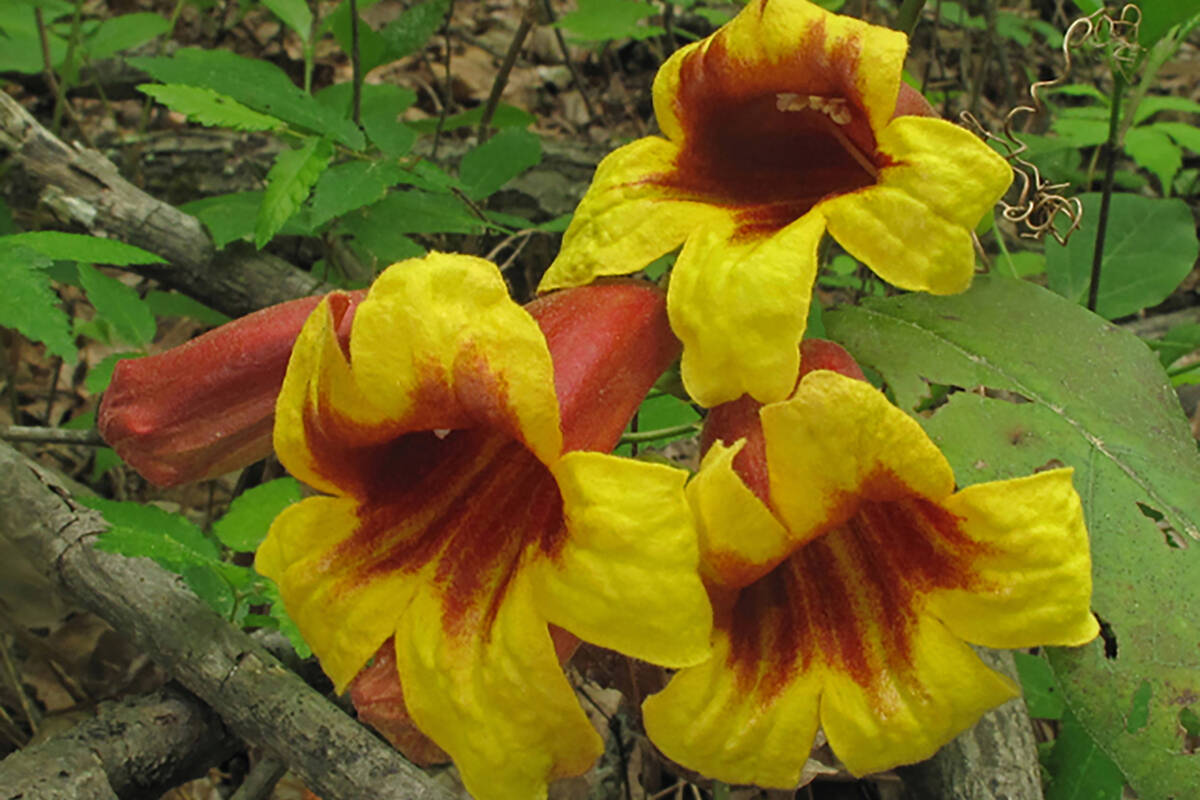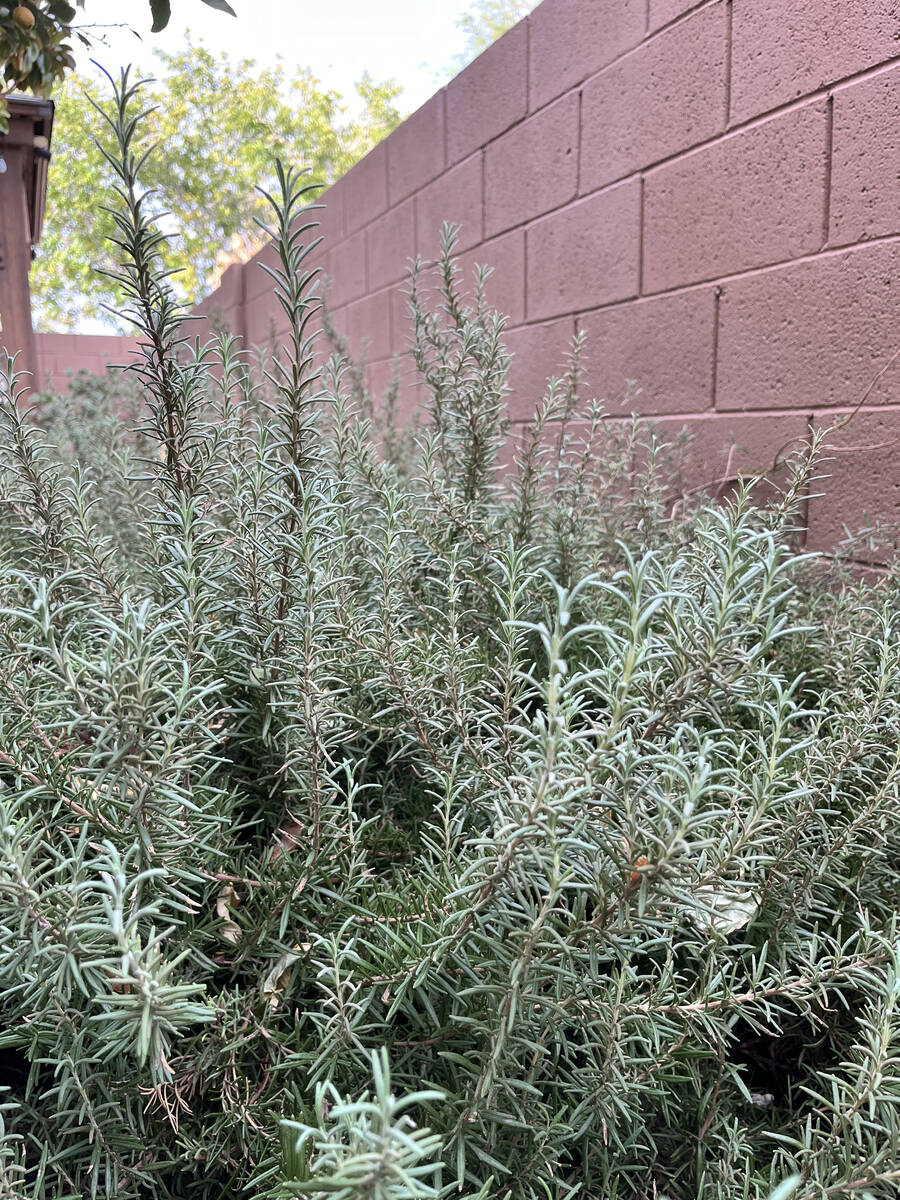What’s the best schedule for drip irrigation?
Q: I am confused about the best schedule for drip irrigation. I lost two rosemary bushes, and my sago palms look terrible. I nearly lost a tree as well, but deep watering brought it back. On assigned days to water, when and how many minutes do you recommend? I live in Henderson and have palms in the back and a mixture of rosemary and small trees in front. One landscaper recommended 10 minutes at 7 and 9 a.m. to promote deep watering, while another recommended the more traditional twice daily, early morning and late evening.
A: I would go with the landscaper who recommended watering less often. When you do that, have him give them more water to compensate for what they missed. How much more? It depends on the size of the plant and the number of days between irrigations. Give them enough water to last the days they are not watered. And big plants need more water than smaller plants. Water big trees and shrubs deeper (usually longer) than smaller trees and shrubs.
This may sound like a cop-out, but give them enough water to wet their roots plus a little extra to keep the salts flushed from the soil.
If your plant stays 3 or 4 feet tall, give it about 3 to four 4 of water through three drip emitters. If your plant is 5 feet to 10 feet tall, give it 4 to 5 gallons through four emitters. If it grows bigger over the years, be prepared to add drip emitters in about three to four years.
The rosemary died because of daily watering. It doesn’t need tiny sips of water every day. The roots of rosemary are about 12 inches deep when it’s young, and about 18 inches deep when it’s bigger in about four to eight years). Your rosemary developed a fungal disease called root rot because of daily watering. If your plants need water every day, there is something wrong.
The only plants that need to be watered every day are the very short-rooted plants — i.e., fescue lawns (about 6 to 10 inches deep), most vegetables (6 to 8 inches deep), and flowers that you pull out twice a year (about 6 inches deep). They need water every day during the heat of summer. All other plants have roots that can be deeper, if they are watered differently.
Water deeper and less often. Water deeper roots (more than 12 inches deep) with more water. If your deep-rooted plant needs three days of water, give it three days of water at one time.
Q: I have a strip of grass on the east side of my home that we use for a dog run. We have replaced the grass six times in five years, supposedly due to a fungus in the summer. This time the landscaper also replaced the dirt. Our landscaper sprays a fungicide every May, but that doesn’t seem to help. They also follow the guidelines for watering. I tried using artificial turf, but the dogs didn’t like it, so I had to replace it with grass. What else can I do to keep and maintain this strip of grass long term?
A: Six times in five years might be an irrigation issue instead of a disease problem, particularly if it is during the heat. You should be applying water at a rate of half an inch every day during the heat of the summer. Put a tuna can in that area and see. Tall fescue lawns can handle the heat, but they don’t like it. They are what is called a cool-season grass, preferring the lower temperatures of spring, fall and winter.
Q: For our Vegas climate, is there a hardy vine that would cover a pergola?
A: Try some crossvine (Bignonia capreolata). It is winter hardy. Others to try include the vine types of honeysuckle, pink trumpet vine, coral vine or queen’s wreath, violet trumpet vine, virgin’s bower and yellow orchid vine.
They should handle the heat of full exposure but are not desert plants, so they will require water three or four times weekly when it gets hot.
Q: How about telling the person with the queen palms to get rid of them. You know our hard freezes will kill them off eventually.
A: One thing I have learned over my 55 years in the business of horticulture is that the field is very diverse. On a macro scale, freezing temperatures vary from the east side to the west side of the valley. On a micro scale, freezing temperatures vary around a home: There is the hot side (usually west or south) and a cooler side (usually east and sometimes north).
Just because it freezes at my house doesn’t mean that it freezes elsewhere in the valley. A lot of that depends on the winter temperature of your neighborhood. Look around at established trees in your neighborhood, and that will tell you what has survived.
People who follow my advice regularly know that I don’t care for most citrus in our climate. I have one reader who has grown blood orange (something I don’t recommend growing here because of our winter freezes) near his house for the past seven years. Many readers have grown Meyer lemons, which most of the time will handle the colder temperatures of winter and produce an abundance of fruit when mature.
Personally, I don’t care much for growing queen palms in our general environment. The main reason is that the fronds are delicate and tatter in the wind. But under the right conditions (if it’s warmer and in an enclosed patio area) they will grow perfectly fine.
As far as temperature goes, queen palm is damaged at about 25 degrees Fahrenheit and killed outright around 15 degrees. I recommend that the “backbone” of a landscape (those trees and shrubs you can’t afford to lose) should look good at temperatures to about 20 degrees.
Bob Morris is a horticulture expert and professor emeritus of UNLV. Visit his blog at xtremehorticulture.blogspot.com. Send questions to Extremehort@aol.com.























